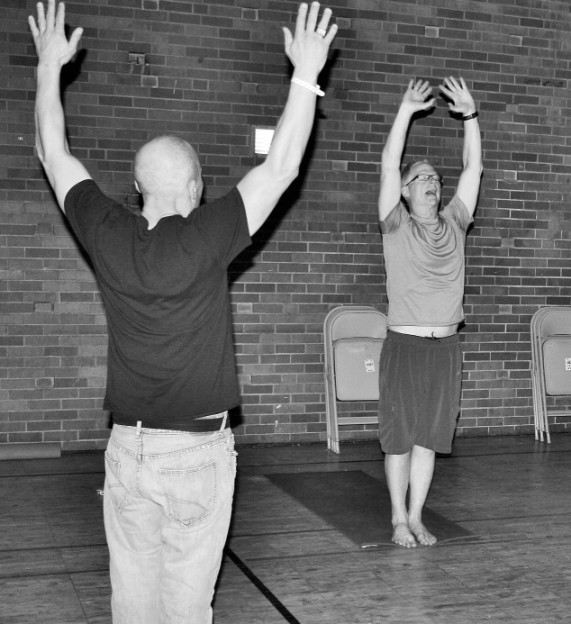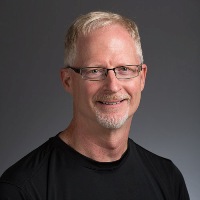
What does yoga mean to you? Why do you practice?
We all have our personal reasons why we practice. For the 15 men at Graterford State Prison (located 30 miles outside of Philadelphia) enrolled in the 200 hour Yoga Teacher Training certification program provided by the non-profit Transformation Yoga Project, the answer is simple yet profound: Yoga means freedom.
Freedom—literally and figuratively. Freedom means finding non-violent ways to deal with violent situations. Freedom means having the strength to live an authentic life in an environment which demeans the human spirit. Freedom means finding joy in the present moment in a joyless environment.
Yoga Teacher Training in prison is unique. It provides an intensive study of both the philosophy and practical application of yoga. But it does all of this within the context of the criminal justice system while preparing the men who will be released back into the community with tangible skills and career options.
The program goes well beyond the physical practice. It involves intense inquiry in ways to apply yoga’s moral principles (yamas and niyamas), to cultivating self-care, repairing fractured relationships, coping with shame and disappointment, and identifying approaches for living a meaningful life.
We have been thrilled—even stunned—by the intensity, commitment and insight gleaned from these men.
The level of participation, learning, and sharing greatly exceeds anything we have seen in studio-based training programs. It seems that the level of intensity of the living environment directly correlates to the intensity of the breakthrough. You can literally see old, non-serving patterns (samskaras) being reworked into vehicles of growth and self-inquiry.
Why teach people who are incarcerated to become yoga teachers?
I’ve heard this question many times as well as the comments and judgments including: “They deserve what they got,” “Don’t do the crime if you can’t do the time,” “Taxpayers shouldn’t be funding ‘recreational’ programs for felons,” and many others.
There are two strong motivators for training people to become certified yoga teachers “behind the walls.”
First, it’s about simple math.
There are over 4,000 men in Graterford, Pennsylvania’s largest maximum-security prison. We can only reach 20 of them at a time in our classes—in fact, there are waiting lists to get into the program. We have seen the life transforming impact that yoga has had on the few who can attend our classes. Training more instructors will reach more people within the prison. More should and can be done to reach those men who are committed to working on self-inquiry and personal freedom.
Since completing the program, eight of the newly certified yoga teachers now facilitate classes for those in the therapeutic units: those in recovery, those in oncology, hospice, mental health units. Classes are conducted for seniors, athletes, and veterans.
Another training graduate, a juvenile lifer, teaches classes in his locked down unit with 13 heavily guarded men. The peer-to-peer aspect of the instruction adds an essential level of credibility, attracting men who would otherwise ridicule or even disrupt the class. Feedback has been incredibly positive, with many participants reporting the same transformational experience many of us have had with our own practice.
Second, over 90 percent of people in prison will eventually be released back into our communities. Mindful of this fact, our curriculum contains a re-entry program for men who will be released within the next couple of years. We know two men who are currently preparing for release and we have been working with the parole office to provide support during re-entry.
We strongly and passionately believe that providing tangible skills and training will assist these men in finding meaningful employment and a renewed sense of self-worth.
Upon release, these men will participate in our growing network of community classes and partner studios. They will also be offered opportunities to participate in additional trauma-sensitive yoga trainings and will be offered job placement assistance teaching in yoga studios to earn income.
These men will be on the front lines, supporting the effort to make yoga accessible to everyone. There is tremendous opportunity to go deep into the community to effect real positive change. Since the power of yoga resonates with incarcerated men, we believe that it will also touch people living on the edge by providing the inner fortitude to make healthy life decisions despite the numerous challenges life throws their way.
We have a moral obligation to returning citizens and our neighbors to provide the tools for successful reintegration. It is simply unacceptable that about 66 percent of people released from incarceration return to prison or jail within three years of release.
Prison yoga is yoga in its purest form.
Yoga is not about having fancy workout clothes or even a mat (many have neither) but about finding comfort in the present moment, enjoying each breath and becoming comfortable in their own skin. These men are tackling difficult topics, many of which are unique to being in prison. Yoga teaches to embrace non-violence, yet how does one be non-violent in an extremely violent environment? There are no easy answers, but the process of sharing feelings and emotions combined with self-exploration is an excellent place to start.
This program is funded solely through donations from individuals who care about our fellow men and women. Not a penny comes from taxpayers.
Sadly, the majority of our society seems to be complacent about mass incarceration, whereas yoga seeks to unite every bit of ourselves with our world. Those of us who facilitated the program at SCI Graterford have been forever changed by the depth and beauty of this profoundly human experience. There is no community within Graterford that is excluded from the love and compassion of our recent graduates. We believe this love and compassion will spread into our local communities.
Author: Michael Huggins
Photo: Author’s Own
Volunteer Editor: Josie Myers; Editor: Catherine Monkman










Read 0 comments and reply